Giampiero’s Defender, on the desolate tracks of Xinjiang near Hami.
It was early September. After months of organizing, preparation, group calls, and visa applications, it was still an arresting moment to exit Mongolia and drive through the barriers at the Chinese border. To drive from Europe to China still seemed inconceivable, even though we were right in the middle of doing so.
When my girlfriend, Evelin, and I were preparing for our Budapest to Singapore (exclusive land-based) adventure, significant time was spent organizing our crossing through China, focusing on the less-traveled regions in the west. We were expecting complicated and lengthy bureaucratic hassles. Still, no matter how 125 much we tried to educate ourselves, nothing could have prepared us for the level of bureau-craziness that awaited.
The first tasks for anyone planning to overland through China are finding travel companions and a tour guide; preparations should start about six months in advance. A tour guide for overlanders—meaning anyone traveling with their own foreign-registered vehicle—is mandatory. Hiring a tour guide is expensive, so take time with your selection. It will likely be advantageous to share or break up the cost; hence, you should seek out overlanders with roughly similar plans. Getting both things right is imperative since eventually, you’ll be spending several weeks with people you’ve never met before.

The mountain pass to reach Huanglong National Park climbs to over 13,000 feet.
Trying to find a group of people with like objectives to travel with may initially sound hard, but joining overlanding groups on social media platforms and different online forums reduce the difficulty of this job. You can either post in these groups or look for others trying to find travel companions to join their trip. Once you find people to go through China with, a discussion around the details, itinerary, duration, camping/accommodation, etc. is a necessary exercise.
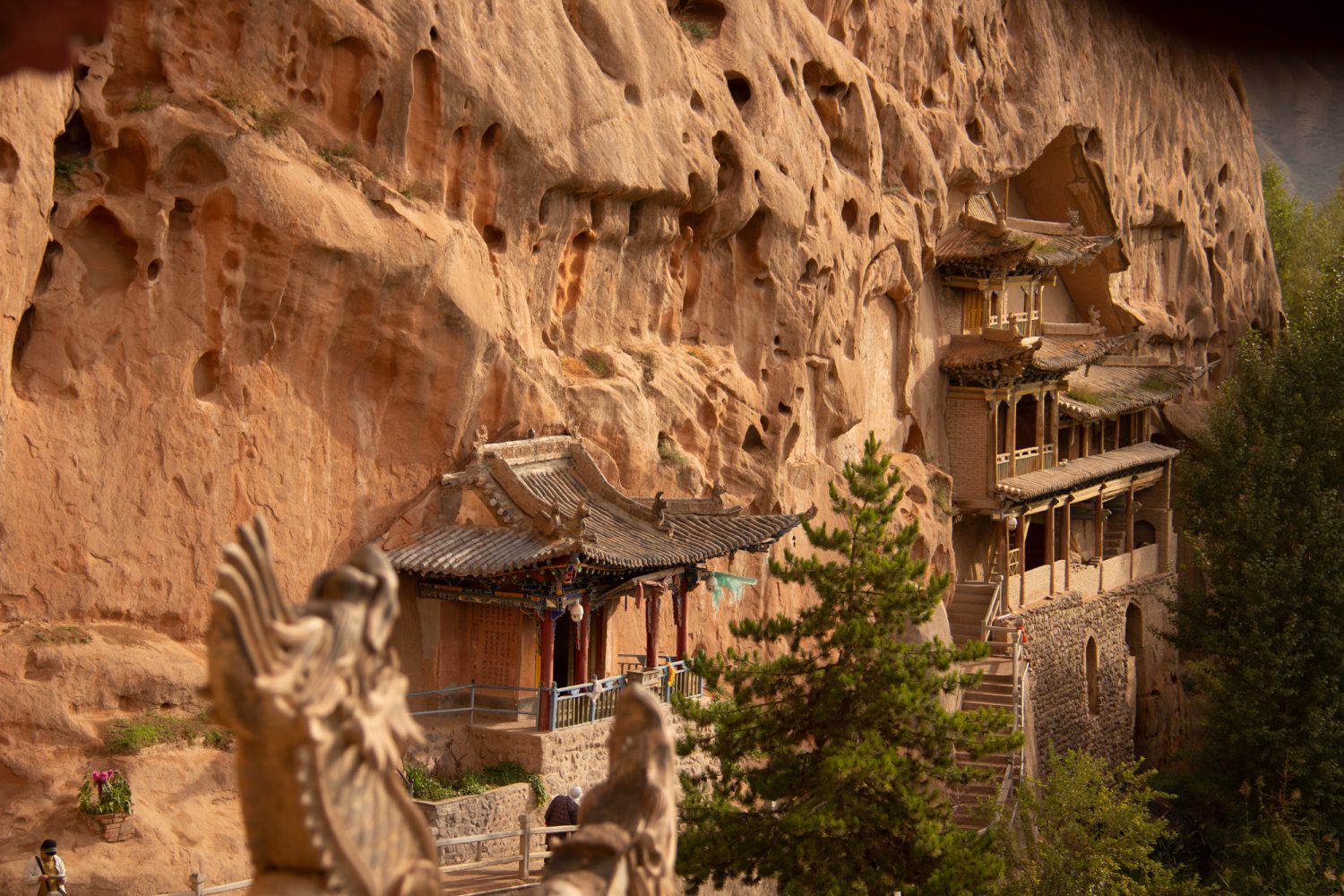
The Mati Temple Grottoes in Gansu Province are incredibly well preserved.
For us, finding a tour company proved to be a more daunting task. Remember, you and your guide will be sharing three meals a day and making decisions together along the way. Look for a company willing to listen to your specifications and a guide that is easy to talk to. Professional handling of all necessary paperwork and police dealings at checkpoints are critical components. They will also be responsible for purchasing insurance for your vehicle to cover your entire journey through the country; you should only need to acquire your personal/medical travel insurance.
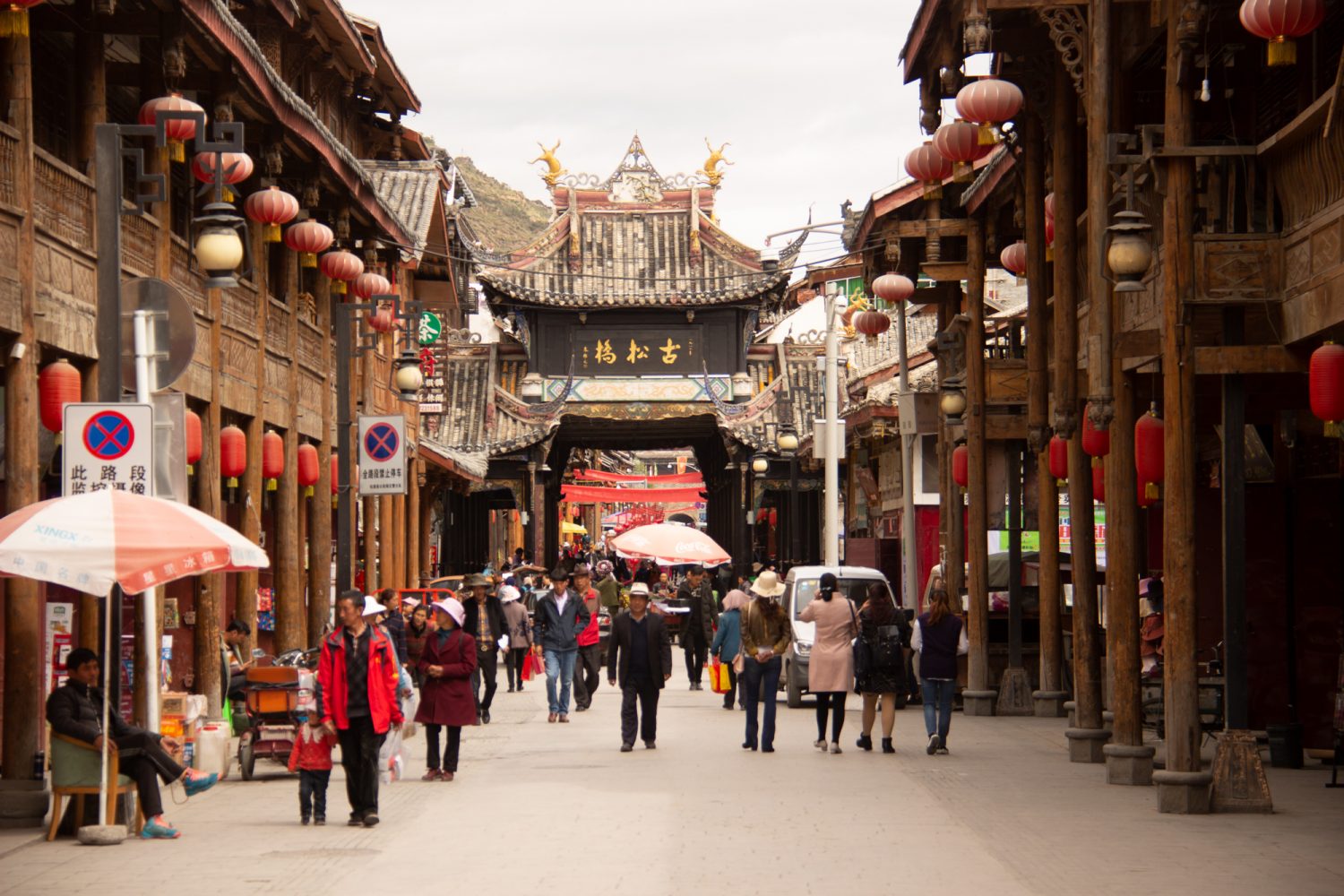
The ancient city of Songpan in Sichuan Province has a history of trade and cultural diversity.
The best way to find tour companies that provide such services is likewise through online forums. Always try to go with a recommended company, and when possible, talk to people who have completed a tour with them before. Determine your priorities before beginning your research to save time.
TIP – The best way to find tour companies is through online forums. Always try to go with a recommended company, and when possible, talk to people who have completed a tour with them before.
Factors to Consider
-
- Your rough itinerary
- Which border crossing you prefer
- Whether or not you prefer camping to hotels when possible (Note: Official campgrounds are limited. Wild camping is far easier in the western regions and mountains, but some tour companies prefer to use hotels. Hotels are often happy to let you camp in their car park for a fee. And some parts of China prohibit camping altogether, such as Qinghai Province.)
- If you want to take motorways or prefer rural roads (Note: Roads are generally well developed, but motorways are expensive due to tollways. Rural thoroughfares are usually in good condition, though maintenance is sometimes neglected— 127 we came across landslides and collapsed road surfaces many
times.) - How long you want to spend in China (Note: Visa limitations vary between 30 to 60 days. Using an invitation letter from a tour agency usually helps with obtaining a longer duration. Potential complications include, for example, if a Turkey stamp is in your passport, a visa is often denied due to political reasons.)
Border Crossing
In terms of border crossings, you have a limited number of options. Traveling from west or north, you can enter from Kyrgyzstan or Mongolia and then exit China to Nepal or Laos. Entering Myanmar from China is not possible due to a decades-long conflict in the Kachin Region, and Vietnam doesn’t have clear border crossing rules in place for foreigners driving their own vehicle (with a lot of luck, you may potentially be able to cross with a motorbike), so these countries aren’t viable options.

The numerous checkpoints in Xinjiang can potentially double the journey’s allotted time; plan accordingly, and allow for flexibility.
We entered from Mongolia, at a very remote corner of the country, Takeshiken Zhen. This was the autonomous region of Xinjiang, with its bad reputation and history of political unrest between the native Uighurs and the ruling Communist Party. It could be heaven for gadget geeks, although not for the best reasons. Xinjiang is among the poorest regions in China, but in one aspect, it’s the most advanced: from a global standpoint, surveillance and security systems are cutting edge. We had the chance to see some of the latest developments in the tracking and spy industry, such as the machine attached to my phone that probably scanned through all of my photos, messages, emails, and notes, under the pretense of looking for anti-China sentiment. Since we didn’t come to topple the regime, we passed through this point successfully, although my pocket knife with its 3.6- inch blade became a victim of red tape.
It turns out that the authorities have an extremely stringent code when it comes to knives, due to violence in the area. Locals have to get their personal QR code engraved on their knives so that they can be easily identified and traced. We witnessed a restaurant cook slicing vegetables for our dinner with his knives chained to the wall. As tourists, we never felt our safety was threatened during our travels in China—in Xinjiang, or elsewhere.
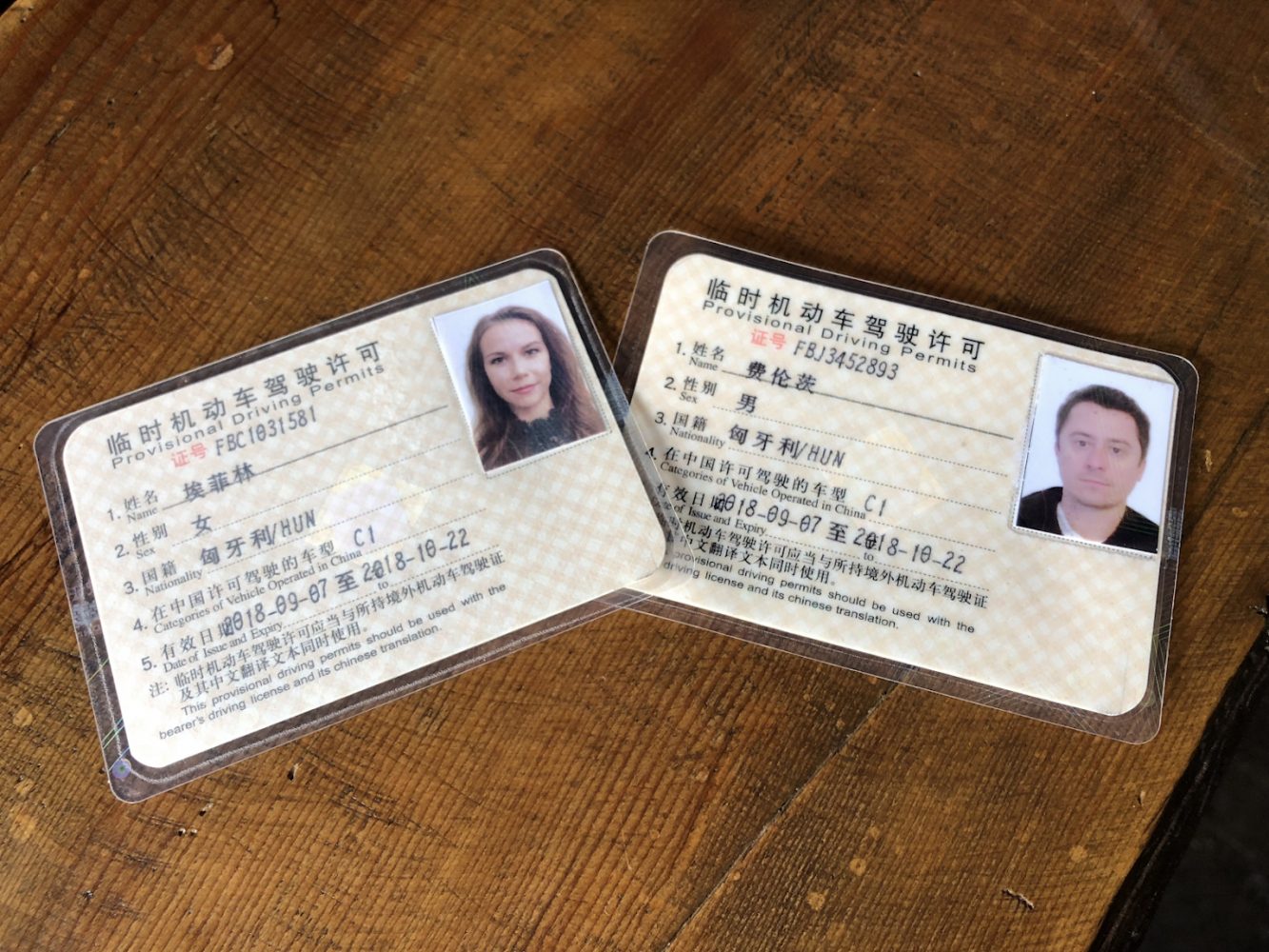
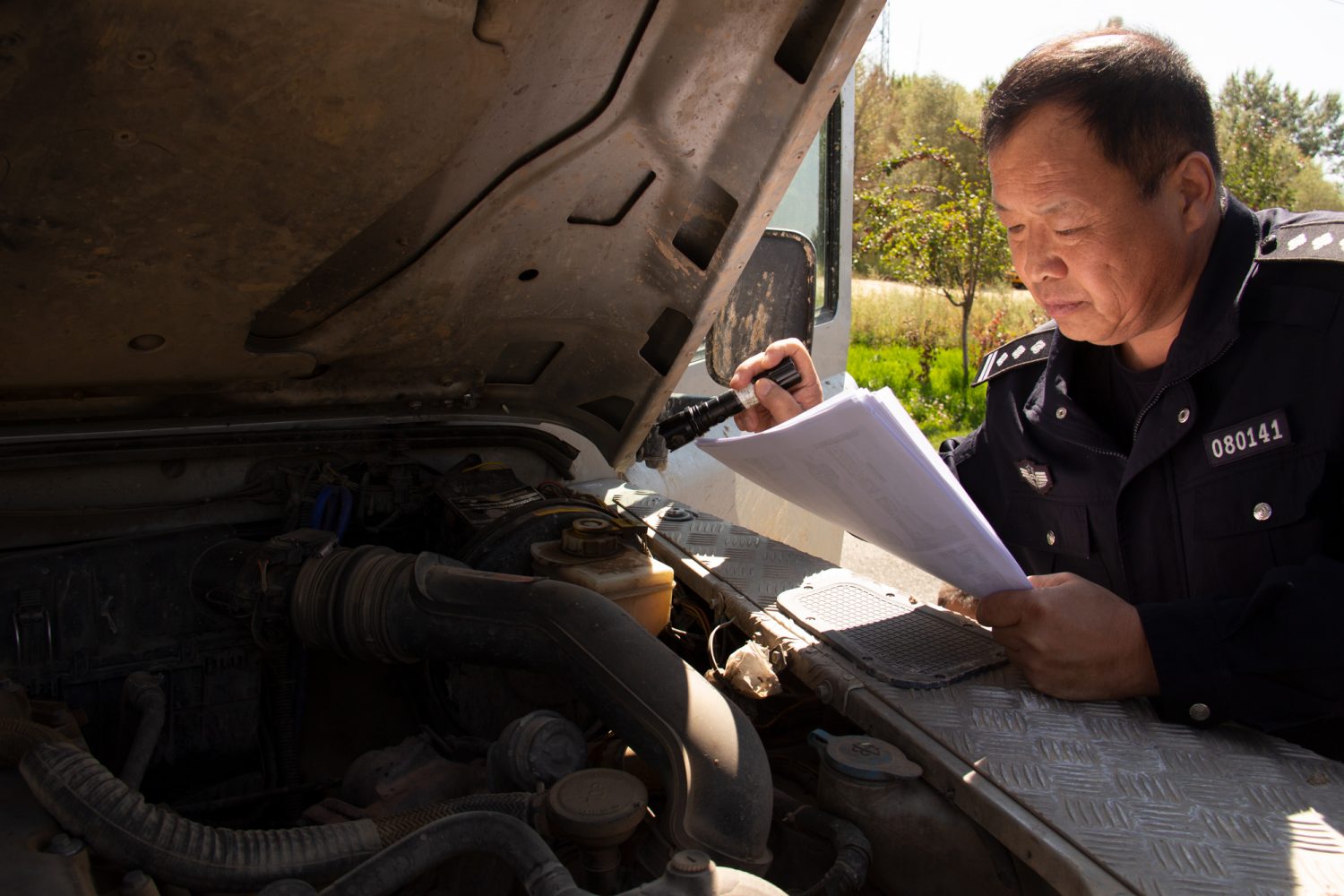
Rigorous vehicle inspections include the verification of VIN and engine numbers before road permits are granted. Vehicle safety checks include testing the suspension, brakes, and lights.
We already had a strong impression of the intensity of Chinese border protocol, but in order for us to experience what we interpreted as the manifest world of Orwell, the actual entry process lasted for another five days. The vehicles went through a full manual check and search at the border post, followed by multiple scans through a large machine designed for trucks, which ironically failed to find our 11-inch cooking knives or any of the hatchets in our three-vehicle convoy.
Modern China’s new technology continued to perplex us. The scanning machine highlighted a number of suspicious points in each vehicle that had to be manually followed and checked by an officer on the ground. Meanwhile, authorities were watching and approving the operation through a portable camera. After a day and a half and several pages worth of stamps later, we were allowed to continue, only to encounter our next challenge with the bureaucracy phenomenon.

Eye tests are required to obtain Chinese driving licenses.
We were on our way to Altay to arrange for the remaining number of permits needed. The semi-desert terrain between Takeshiken Zhen and Altay was breathtaking. This part of the country is still relatively untouched and undiscovered by tourism, and the landscape was peppered with extraordinary rock formations, formed from harsh winds and an arid climate. Surveillance cameras were installed above the perfect tarmac road every 20 meters for hundreds of miles, a portent of things to come.
Altay seemed like a peaceful town, with sunny mornings, smiling kids walking to school, and the hustle and bustle of people rushing to work. However, being in Xinjiang, there were some differences when compared to other Asian towns of similar size. At every major intersection was a small company of police officers in full anti-riot gear—complete with helmets, shields, and equipped with armored vehicles. There was also a police booth or station on the street approximately every 450 yards.
Our tour guide’s help was invaluable on more than one occasion. Shang helped us get through an enthusiastic anti-riot man at the entrance to the hospital parking lot; we were there for an eye test as part of obtaining our Chinese driving licenses, necessary for any foreigner wanting to drive their own vehicle. One step was to get through the standard tumbling E-chart. Evelin and I aced the test. I was helped by my contact lenses, whereas our companion Giampiero sought my assistance in showing him the answers behind the doctor’s back.
Both humans and machines are required to take tests if they want to overland through China, so after the eye tests, we were on our way to the traffic police station. Niels and Lotte led the convoy with their Hilux, simultaneously getting directions from Shang in Giampiero’s vehicle through a CB radio. Evelin and I were trying to keep pace with the others, but the Prado struggled with only three gears working out of the five and a failed turbo. The mechanical issues had presented themselves the week before, and by then, our truck’s condition instigated significant worry. We had about 6,000 miles ahead of us through China, and since we would be driving by caravan most of the time, we didn’t want to be a liability.
At the traffic police station, the basics were inspected for the fourth time since entering the country. They checked the chassis and engine numbers against the vehicle’s registration and the ownership documents. Although we’d been booked for the technical and safety vehicle inspection that afternoon, the polite but confident headshaking by the main officer suggested that we wouldn’t be camping next to rice fields anytime soon.
The roadworthiness tests were conducted with ambiguity, but seemingly in compliance with all the rules and regulations. They ran tests to make sure our brakes and lights were working properly, but the fact that our vehicle could only crawl out from between the rollers of the moving road by using low-range gears due to lack of power was deemed inconsequential. In spite of its numerous problems, our vehicle still passed all the tests, possibly since the officers welcomed the diversion of taking pictures with us over the actual inspection. We had the feeling that the officers were just covering their backs; as long as they could check the boxes on their forms, they were happy to let us carry on. This was true in almost all instances.
Early the next day, despite having the eye and vehicle tests in hand, the officials at the traffic police station met us with more shrugging shoulders and shaking heads. Apparently, we still didn’t have all the documents required to get our route permits, licenses, and license plates.
We later learned that we were the first overlanders to pass through the Takeshiken Zhen border in over a year and a half. Officials had to work out what the actual procedures to follow were, developing the process as they went along. It’s important to note that a carnet de passage is not valid in China, as they have their own temporary import guidelines. Since these processes were new even to the officials in Xinjiang, and nobody wanted to make a decision or take responsibility, every official had to ask their superior for permission, who in turn, asked their superior. Wiser overlanders choose the border crossing at Erenhot, where these hurdles can be done and dusted in 24 hours.
By this time, we were all commuting in Giampiero’s Defender between the traffic police station, our new favorite restaurant, and the mechanic. The leaf springs of the Hilux needed adjusting, and we found out that an important cable on our Prado that had a role in controlling the automatic transmission didn’t like Mongolian river crossings, so a cable connection was corroded. We had an agonizing wait ahead of us, as the necessary part had to be sent from Beijing. Naturally, we were in the farthest corner of the country away.
Welcome to the People’s Republic of China
It was already Friday afternoon when we got the news that our little team was finally welcome to discover the People’s Republic of China. There was even a small ceremony where our Chinese licenses and plates were handed over. Since it appeared our administration issues were more or less sorted, I was now starting to worry that Evelin and I would hold everyone up. We
even discussed separating from the group so that the others could be- gin the journey. However, remember that in Xinjiang, absolutely everyone has to have a tour guide, so that idea was not feasible. We also had a fantastic team, which meant that nobody wanted the group to split. Lotte, Niels, and Giampiero were all very understanding with respect to our vehicle problems.
TIP – It’s important to note that a carnet de passage is not valid in China, as they have their own temporary import guidelines.
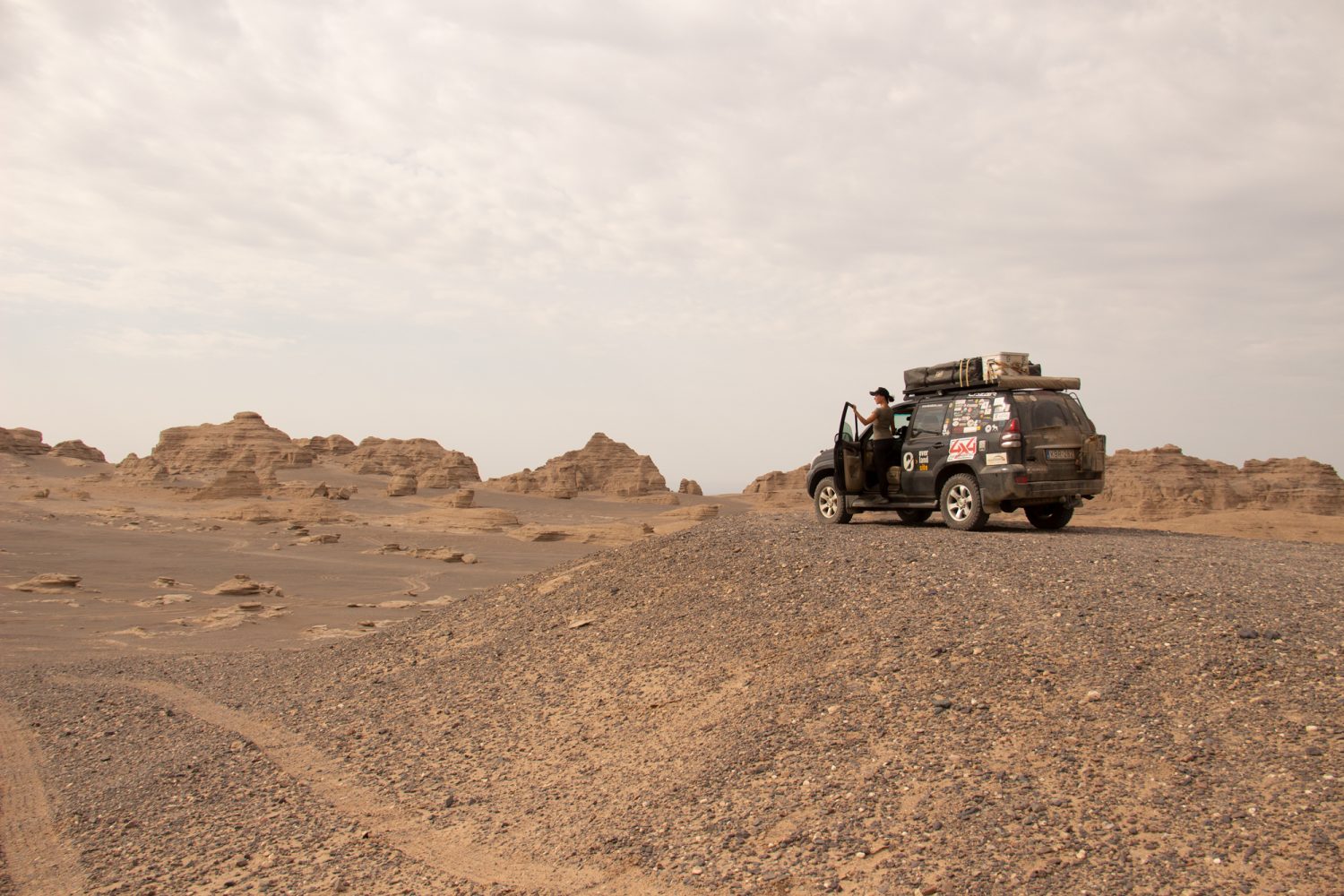
Hami’s breathtaking Yadan landform in Xinjiang was formed by wind erosion; it’s also called the “City of the Devil.”
Luckily, we didn’t have to test everyone’s patience much longer since the part arrived on the same day as the ceremony. Thanks 129 to the adept, accommodating mechanics, the cable was replaced by 10:00 p.m. The next morning, we were heading south to begin our great adventure together through China to Laos. In a strange
twist of fate, the redundant bureaucracy encountered created the same circumstances that helped us not be the cause for our group’s five-day holdup. It ended up being a blessing in disguise.
Tips and Tricks
-
- Start preparing and organizing at least six months in advance of your planned entry.
- Find travel companions to share in organizing efforts and cost.
- Get to know your fellow overlanders through regular online video calls.
- Do thorough research and due diligence of the Chinese tour companies; it’s best to choose by personal recommendations when possible.
- Set your preferences and make sure to find a tour company that can accommodate them: camping, rough itinerary, preferred point of entry and exit, duration, avoiding motorways (or not).
- Arrange your Chinese visa well in advance.
- Arriving from the west or north: If you don’t want to drive through Xinjiang and/or Tibet, choose to enter Erenhot from Mongolia. Otherwise, you can cross at Bulgan (Mongolia) or Torugart Pass (Kyrgyzstan).
- Arriving from south/southwest: Laos, Myanmar, Nepal, and Pakistan are your entry options, depending on your overall route.
- Plan on one vehicle having a spare seat for the guide.

Huanglong is a UNESCO World Heritage Site, and its travertine pools a spectacular draw.
When you’re in Xinjiang, your hindrances don’t end with going through the immigration and customs process. There are police checkpoints every 20-30 miles or so. Filling up your fuel tanks can also be an undertaking—not because gas or diesel isn’t available, but because every gas station is heavily guarded due to security concerns and surrounded by wire fencing. You’re not allowed to have any liquids in the passenger area of your truck, so any drinks must be removed (that goes for any passengers as well) before a guard inspects your vehicle’s interior. In addition, one of us always had to wait outside the station’s perimeter. Other than those minor inconveniences, the fuel was of good quality and readily available.
Once we left Xinjiang, cell phones suddenly worked without interruption, gas stations were completely open (unguarded and without inspections), and the police presence was drastically reduced all the way until Laos, our exit point. Instead, we were met only by incredible scenery, futuristic cities, and well-preserved historic towns. If only our initial welcome had matched the reception we received from the people we met throughout the country.
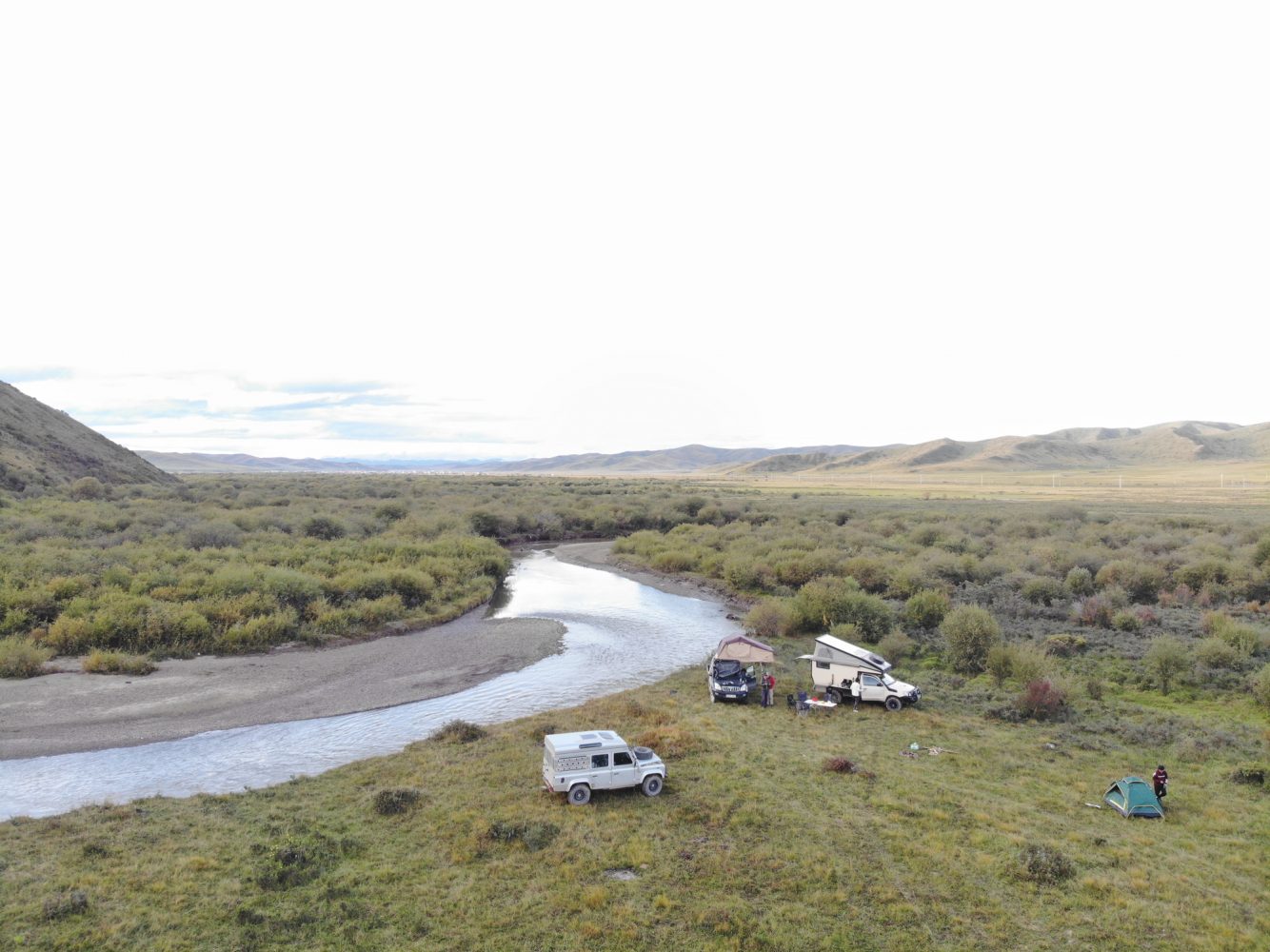
In China’s mountainous areas, it’s still possible to find wild camping spots.
All told, we spent 43 days in China. Shang, along with his colleague Brenda, can be credited with making our dream to drive through this magnificent country with our vehicle come true. In retrospect, China was the highlight of our Budapest– Singapore adventure. Overlanders often say that due to the difficulties and high expense, driving through China is a once in a lifetime experience. I do hope this won’t be the case in the future, and that regulations will be relaxed, allowing more people to discover it’s beauty.


